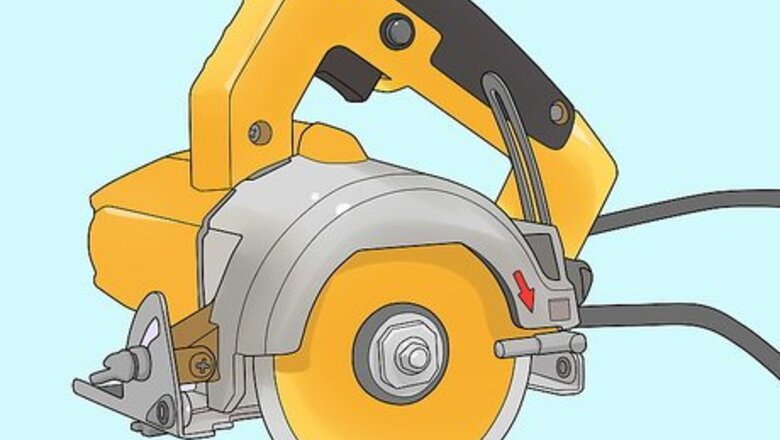
views
Prepping the Saw and Marble
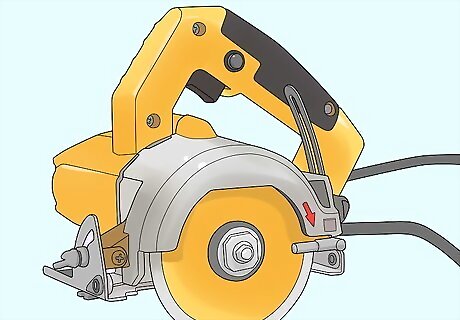
Rent or purchase a wet saw with a diamond blade. A wet saw is the best option for cutting stone slabs, and the diamond blade ensures a smooth, clean cut. If you only need to cut marble for a few jobs, renting may be more cost-effective than buying a saw. If you are planning multiple home improvement jobs, buying your own saw may be more economical and convenient. Make sure you get the right kind of wet saw. If you're cutting pieces of marble that are more than 15 inches (38 cm) in diameter, a tabletop wet saw (the kind most commonly available for rent) will not be effective. Ask an employee at the store to recommend the best saw for the job you want to do. If you're cutting a thin slab (like the kind you'd use for a shower wall or counter top), you can use a circular saw with a diamond blade. A new wet saw usually costs about $100-300 (£77.25-231.76). Renting wet saws cost about $35 (£27.04) a day or $100 (£77.25) a week. The blade of the saw has diamond crystals, which help cut dense and strong items.

Read the instruction manual before you operate the saw. If you do not know how to safely use the saw, you may injure yourself when cutting the marble. Review the set-up instructions and safety warnings on your particular model, as they are all slightly different. This way, you know the ins and outs of your model and can easily and safely cut the marble slab.
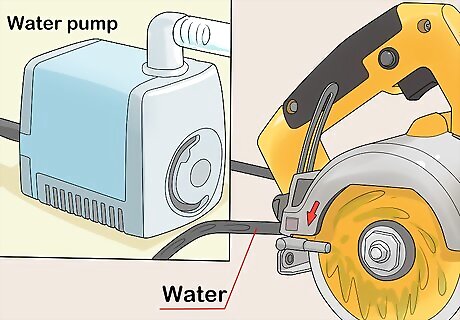
Connect the saw to a water supply. When using a wet saw, the blade must remain consistently wet in order to keep it cool. If the blade gets too hot, it can cut the marble incorrectly or inconsistently. You may have to fill up the separate water tank or connect the saw to a hose, depending on your particular model. Read over your instructions to find exact instructions on how to connect the water supply to your saw.
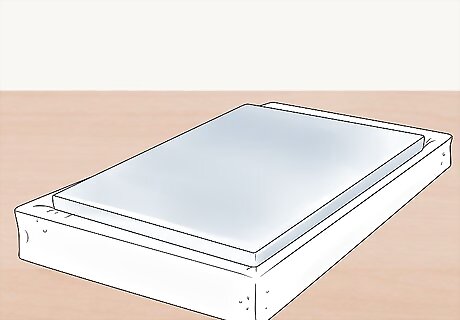
Put the marble on a piece of thick, sturdy foam to prevent scratches. Purchase a large piece of foam from a craft supply store. Use this to keep your marble flat and protected as you cut it. When you move the marble across the platform of the saw, the foam gets scratched up, rather than your marble. You can make the cutting job easier by attaching the foam to a piece of ⁄4 inch (1.9 cm) plywood. Use clear silicone to attach the foam to the wood, and wait for the silicone to dry before cutting. You can then lay the board on a saw horse so you can cut at a comfortable level. The foam should be the size of your marble or larger. Use any non-abrasive surface if you don't have foam, such as cardboard.
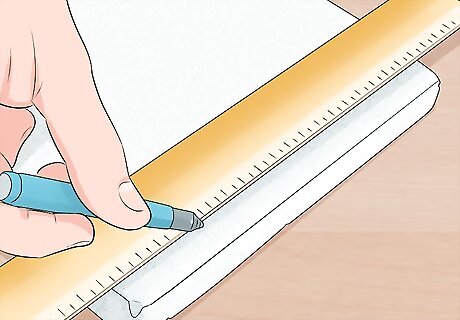
Make a mark on the marble to act as a guideline. Use a pencil to mark the marble exactly where you wish to cut it. If you'd like, use a ruler or tape measure to ensure your line is drawn straight and accurately. Ensure the mark is easily visible, so you can use it as a guideline while cutting it with the saw. Alternatively, use a piece of tape to mark the marble instead of a pencil. This is a good idea if you want to easily see the line on a dark piece of marble.
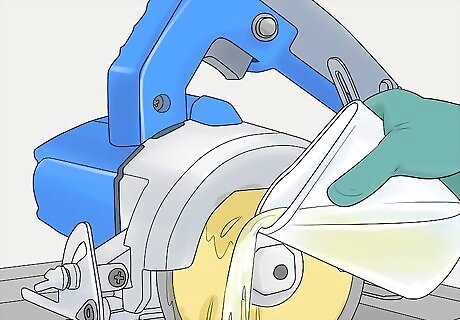
Pour water on the front portion of the blade to lubricate it. Before you turn on the saw, fill a cup with water and pour it over top of the blade so it gets completely covered. You don't have to use a certain amount of water, as the saw gets wet once you turn it on.
Keeping Safe

Put on protective gloves to avoid cutting or slicing your hands. Safety gloves keep your fingers covered, minimizing the risk of cutting them when slicing the marble. Select a pair of gloves made from thick, durable canvas material, for example.

Cover your ears with safety earmuffs to protect from the noise. Put on a pair of protective earmuffs before you use the saw to avoid any hearing strain or damage. You'll notice a loud, piercing noise when the blade pierces through the marble. Since you are standing very close to the saw, this noise may damage your hearing. These earmuffs are also worn when using a jackhammer or lawn mower, for instance.

Wear safety goggles so flyaway pieces do not injure you. Small fragments of marble may fly up while using the wet saw, and one of the flyaways could wind up in your eye. When you put on the goggles, make sure your entire eye is protected.
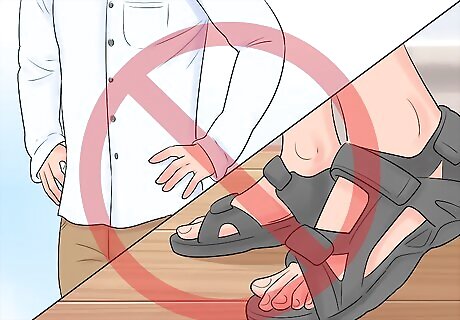
Avoid wearing loose-fitting clothing or open-toed shoes. If you wear baggy shirts or pants, the extra fabric could get caught in the saw and cause serious injury. To prevent this, wear clothing that fits well. Additionally, keep your toes covered to prevent cuts from flyaway pieces of marble. Wear boots or sneakers, for example.

Tie up long hair to prevent any injuries. Similarly to loose clothing, long hair can easily get caught in the blade. Use an elastic hair tie or scrunchy to tie up long hair, or use a headband to secure medium-length hair.
Making Your Cut
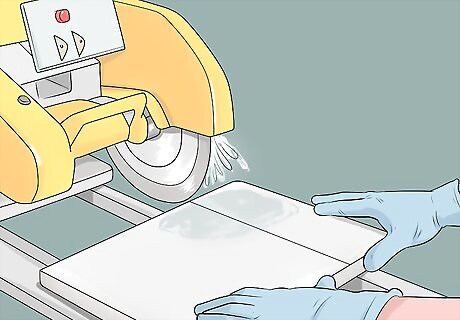
Align the piece of marble with the correct side of the blade. The correct side depends on your particular saw. Typically, you want to line up the marble with the right side of the blade. If you use the wrong side, you may cut the slab too short by mistake. The blade cuts off about ⁄8 in (0.32 cm), so ensure the ⁄8 in (0.32 cm) comes from your scrap side and not the piece you're using. To tell which side of the blade is correct, make a practice cut on a scrap piece of marble. Make sure to keep the marble clamped down so that it can't move while you make the cut. A hand clamp with soft pads is a good option for safely keeping your marble in place.
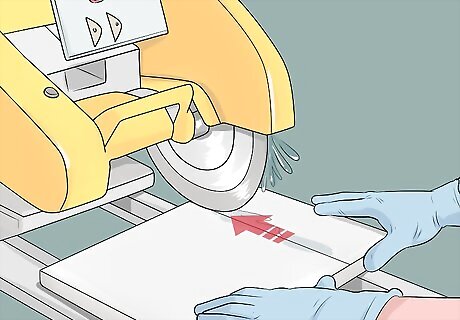
Aim to cut the marble slowly and carefully to avoid cracks or breakage. The faster you move the marble through the blade, the more likely the slab will chip, splinter, or break. To prevent this, always make your cuts slowly, and let the machine do the work for you. If you start to see smoke as you cut, slow down. Try sawing a small section, then pulling the saw back a little before you begin the next small section. If you want to test out how cutting at different speeds affects the marble, make a few slices on a practice slab before you cut the final piece.
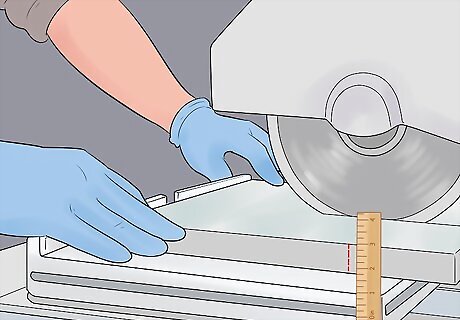
Make a 1–3 in (2.5–7.6 cm) cut with the back of the marble facing up. Cut the marble with the finished side facing downwards onto your piece of foam. Turn on the saw when you are ready to use it, feed the marble slowly into the saw until you reach about 1–3 in (2.5–7.6 cm), and then stop. Making a small cut on the back of the marble ensures the slab does not chip or break. If you don't do this, the end of your tile may break off while you finish the slice.
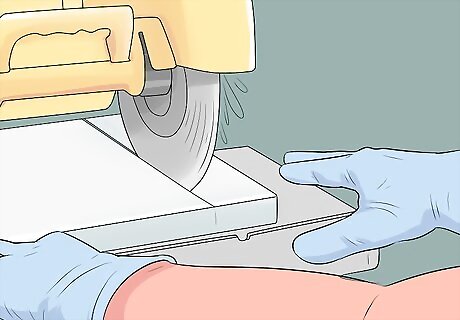
Flip over the marble slab and continue cutting the rest of the way. Once you've made a small slice to the back, turn the slab over so the finished side faces upwards. Then, start making your cut on the opposite end of the slab. Continue cutting the rest of the way through the slab to ensure your cut is clean and even. If you're cutting a very thin slab of marble, like the kind you'd use to cover a shower wall, there's no need to flip the marble and make 2 cuts. Just make a single cut straight through with a diamond circular saw blade.
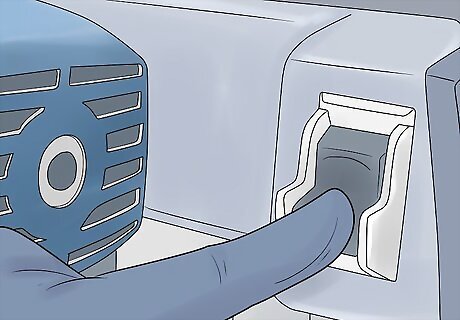
Turn off your machine after you make your cut. To prevent any accidents, keep your saw turned off when not in use. Do this whether you are finished working on your project or cutting multiple pieces of marble. If you are cutting multiple slabs, turn it off until you are ready to make the next cut.
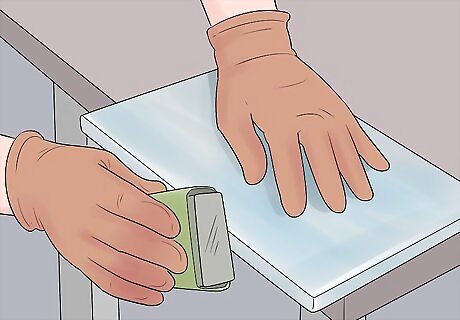
Clean up any jagged edges with dry or wet fine-grit sandpaper. Since the diamond blade cuts the marble so smoothly, there may be jagged or sharp pieces on the edges. Use wet or dry sandpaper to manually smoothen the edges if you'd like. Start with 120-grit sandpaper to soften the edges at first, and then use 2500-grit sandpaper for an extra-smooth finish. If you use a coarse sandpaper, you'll scratch the marble. To wet your sandpaper, hold it under your faucet for 3-5 seconds. Using wet sandpaper may make it easier to sand the stone surface. For an automatic option, try using an angle grinder to quickly smoothen the marble. However, you may have less control over the sanding process if you use a machine. Another option is to use an orbital sander.
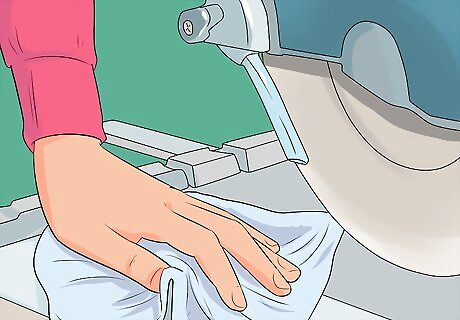
Clean up your workspace and your wet saw. Once you're finished, wipe down your surfaces with a clean rag and all-purpose cleaner, sweep your floor of any dust, shards, or remnants, and wipe down your saw after it's cool. Keeping your workstation clean in between uses helps you prevent injury and keep your items in good shape. Additionally, drain your water tank following your particular instructions.
Use a grinder with a dry cut diamond wheel to add finishing touches. Once you've cut the marble into the basic shape that you want, you may wish to make further adjustments. With a grinder, you can: Cut holes. Make sink cutouts. Create beveled edges.




















Comments
0 comment